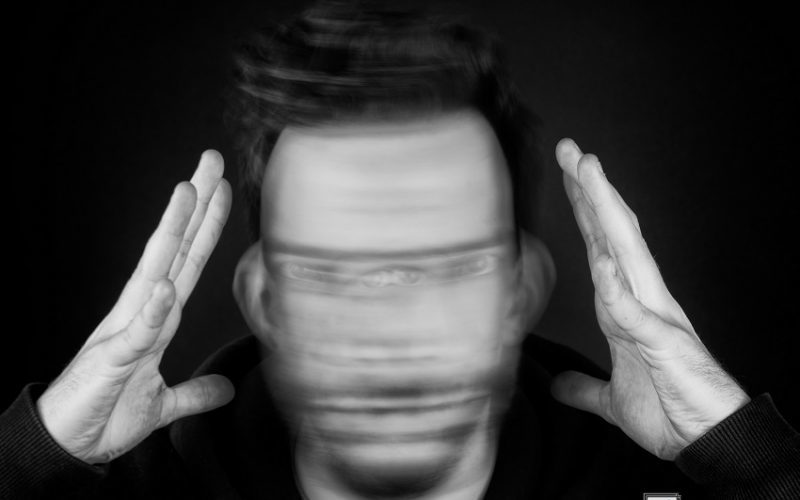Written by : Prarthona Saha
Photo credit : shutterstock.com
While researching about mental health, I came across a certain line several times, i.e. mental illness is more common than cancer, diabetes, or heart disease. And that got me thinking, I might know many people who have had physical diseases but how many of us actually know or have heard of someone suffering from mental illness? If it is this common, how come it is so unheard of?
The stigma is real, especially in a country like India. Mental illness is still a taboo. The dichotomous nature of the Indian society makes mental health a multifaceted issue.We are not immune to patriarchy, it is deeply embedded into the very fabric of our society. This has proven to be harmful to not only to women but also men especially with regards to mental health. Associating mental health with women has become quite the norm, but how many of us have actually spoken or heard about men and their mental health? How many times have we seen our fathers, uncles, brothers, husbands talk about their mental health, or even cry? Tired narratives like “Boys don’t cry!” “Man up!” “Don’t be such a sissy” has created a toxic environment for men as a whole where showing emotions or even speaking about them can be perceived as a weakness, a character flaw or “unmanly”. And what can be worse for a man than being perceived as a woman? The notion that women maybe emotional but men need to be stoic is a common gender norm. It is not only restrictive but also equally damaging.
Even though times are changing, the societal expectation imposed on men with regards to expression of emotion is an open secret. Toxic masculinity is a by-product of patriarchy which permeates stereotypical perceptions of men, where men conform to their prescribed traditional behaviours and gender roles, which is not only harmful to themselves but also to the society as a whole. Emotional repression coupled with the idea that men should be self-reliant leads to the inability of processing emotions healthily. This creates psychological issues and forms barriers in the way of the help needed to treat such issues.
The World Health Organisation (WHO) defines health as a state of complete physical, mental and social well-being and not merely the absence of disease or infirmity. Bad mental health affects the functioning of an individual, his or her social capital, productivity, and ultimately the quality of life.WHO also states that close to 8,00,000 people die due to suicide every year, which is one person every 40 seconds.
The National Mental Health Survey of India, 2015-16 stated that one in every 20 people in the country suffers from depression. The study also stated that the incidence of mental morbidity was higher in males (13.9%) than females (7.5%). According to the National Crime Record Bureau (NCRB), in 2018 there were a total number of 1, 34,516 deaths by suicide in the country, where 92,114 were male and 42,391 were females. As per a study in The Lancet Psychiatry in 2017 one in seven Indians were affected by mental disorders of differing severity.It was also clear that mental health disorders have doubled since 1990.
Recently, Indian film actor, Sushant Singh Rajput, died by suicide. This sent shockwaves throughout the country, and subsequently instigated a discussion on mental health. Fans of the actor expressed outrage and social media went berserk with opinions and think pieces of self-appointed mental health experts. We all have seen messages echoing the sentiments ‘suicide is never the answer’ but then what is?
This incident also highlighted another grave concern of how the media showed an absolute lack of sensitivity in reporting and complete disregard of the guidelines issued by the Press Council of India (PCI) last year. Organizations like WHO and various others all over the world have guidelines for reporting suicide, none of which was followed by most media outlets. Sensational headlines, stigmatizing language, invasion of privacy of the family of the deceased brought forth the gaping loopholes in reporting of such cases. There was no dignity in his death.Print and broadcast media when rightly used can be an effective tool to enlighten and educate the masses on mental health. However, what ensued was thoughtless monetization of a death of a celebrity. This incident also brought forth our obsession with Bollywood while we swept other grave issues under the rug.
According to the NCRB data suicides reported in 2018 showed an increase of 3.6% from 2017. Another such intricate issue in India is farmer suicide. Maharashtra, Andhra Pradesh and Karnataka are the hotspots of farmer suicides. A total of 10,349 persons involved in farming sector have died by suicide during 2018, accounting for 7.7% of total suicides victims in the country. Farmer suicide is a very complex phenomenon which is intertwined with psychological as well as economic and social factors. Crop failure, increasing debt, water shortage and several complicated factors has given rise to this. Proper economic packages, social security schemes, forgiving debt can improve this grave situation. Where on one hand we see farmer suicides almost every day, the death of a celebrity on the other hand, draws two very different reactions from us as a society. While the issues are not identical at all, you cannot help but wonder the apathy shown towards the farmers in spite of this being a growing concern in a primarily agricultural nation like India. The only thing in common here is mental health and the huge gap we are yet to bridge in terms of availability and access to mental healthcare, destigmatization, awareness raising and sensitivity in dealing with mental health issues.
There is also a huge gap in the urban-rural scenario. Privilege plays a big role in mental healthcare in our country. It does grant one easy access to mental healthcare but there is a stark contrast in the reality of the not so privileged. Major lack of awareness, access and availability of mental healthcare largely plagues the not so urban areas. Having said that, social media has played an integral role in the recent times in spreading awareness. The urban rich and the middle class have easy access to literature on the internet. Dinner table conversations have started around the issue in our homes but there is still much to be done.
An article in the Indian Journal of Psychiatry specified that the annual health expenditure of India is 1.15% of the Gross Domestic Product, and the mental health budget is <1% of India's total health budget. A budget of Rs 61,398 crore was announced for the health sector for the fiscal year 2019-2020 which was a 16 percent increase from 2018-2019 budget of Rs 52,800 crore. However, when it came to mental health, the National Mental Health Programmer which focuses on ameliorating issues pertaining to the mental health scenario in the country, observed a drop from Rs 50 crore to Rs 40 crore. According to a 2018 newspaper article in the Times of India, the Ministry of Health and Family Welfare required 13,000 psychiatrists. The number of psychiatrists then were 3,500 which was about one psychiatrist for over 2 lakh people.Aside from psychiatrists, there was a dearth of 30,000 Psychiatric Nurses but had only 1500, 20,000 Psychologists but had only 1000 and 35,000 Psychiatric Social Workers but had just 900.
Mental health in India is plagued by three broad issues; stigmatization, lack of awareness and lack of adequate avenues of redressal. India is heterogeneous in terms of demography and has a diverse social, economic, and cultural climate. So logically, the solutions needed in this context needs to have a multi-pronged approach, which would aim to amend not only policies but also the structures in place to control this multifaceted issue. Increasing public awareness, sensitizing the stakeholders, and a proper mechanism to evaluate, gauge, and monitor the progress of the aforementioned aspects should take precedence. Implementation of the legal aspects alone will not bring about immediate societal change. Rehabilitation of people with mental disorders also needs to be delved into. Investment in this field is urgently needed for creating facilities, training the stakeholders, awareness raising and research. India still has a long way to go in terms of mental health care and facilities. There is a huge gap between theory and practise which can be bridged over time if mental health is actively prioritized.
Men and women are afflicted with mental health issues at large but men are less likely to talk about it or seek help. A way to work through the stigma is initiating a conversation in our own homes and social circles around it.This may be a start to dismantling patriarchal ideas of masculinity, and the culture of machismo ingrained in us. Rewriting ideas of how men are supposed to be, act, think or speak will attack this issue at the crux. Educating oneself on the symptoms men experience or display, the changes in behavior and mood while they are under mental duress can also help in correct diagnosis and treatment. We as a society need to do a better job in raising our children, especially men, where they are given the freedom to be what they want to be rather than what they should be. We need to teach boys, especially they young impressionable minds, that it is okay to not be okay, it is okay to vent, to talk about feelings and everything in between.The inability to be vulnerable does not have to turn into something so overwhelming that it hurts them and the people around them too. We have to let them know that it is better to cry, to ask for help than to be pushed to such a state where taking your life seems the easiest. We need to do better.
Prarthona Saha
The author has a Masters degree in Human Rights and is currently employed in the private sector From Kolkata, India.




